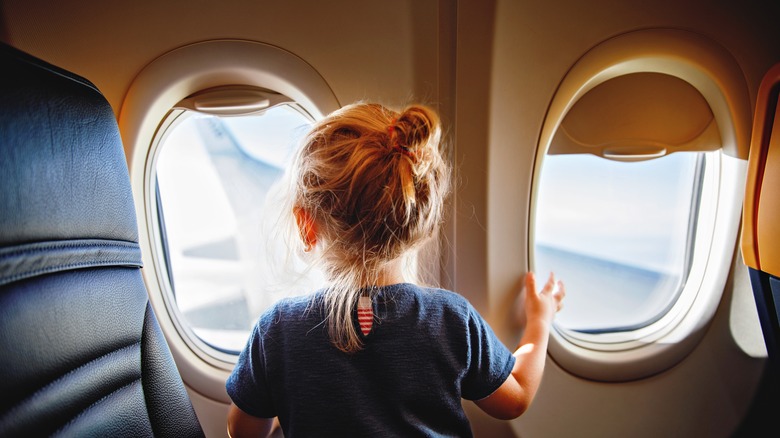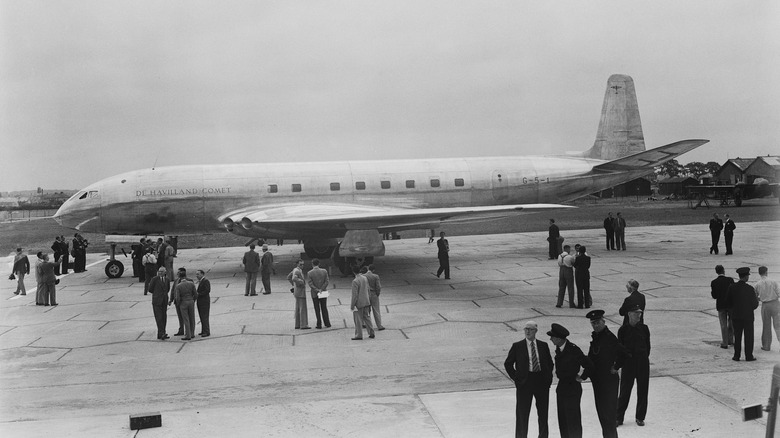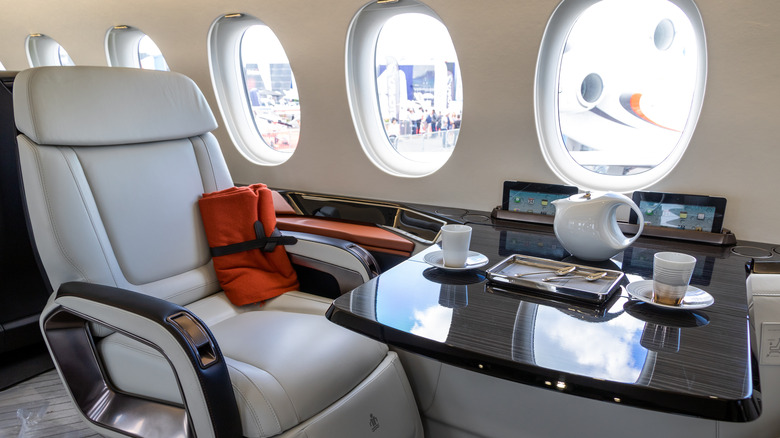Why Airplanes Can't Have Bigger Windows
Flying the skies on a passenger jet can give you a view like no other, providing a birds-eye look at cities, rivers, fields, or forests. For first-time fliers or children, this can be a thrill, but even the most seasoned of travelers probably takes a peek out of the window at least once or twice a flight. However, if it's your first time on a commercial flight and you've been looking forward to that view, you may be disappointed when you finally get on board to discover that airplane windows are always a rounded oval shape instead of a square and are relatively small.
A large picture window on a passenger jet to showcase the scenery as you take off would be incredible — but not for long. That's because planes need to have small windows in order to keep the frame stable and strong, as well as to help manage the difference in pressure between the inside of the plane and the outside. When a plane is pressurized, which is done not only for comfort but to ensure that passengers have enough oxygen, the body of the plane expands and puts pressure on doors and windows. Larger windows would simply be unsafe and could weaken the fuselage or even cause it to fail, resulting in rapid decompression.
Small, round windows are best for airline safety
We're used to seeing rectangular windows on buildings, but you rarely see that shape on modern planes. Historically speaking, that wasn't always true. In the 1950s, when the commercial airline industry was just getting its feet under it, the world's first commercial jet, the De Havilland DH-106 Comet 1, suffered a series of catastrophic crashes. In each of the three incidents, the planes broke up mid-flight and everyone on board was killed. Investigations eventually found that the shape of the windows, which were square, contributed to the crashes.
In addition to providing more space between windows to keep the fuselage strong, round windows also allow for a more even distribution of pressure across the surface, making it the stronger design choice. The materials windows are made of are just as important as their size and shape, which is why airplane windows are made from multiple layers of acrylic to make them tough enough for all the pressure changes. You may also notice a tiny round hole in your window. These are called bleed holes and they help to balance the air pressure. It turns out that keeping everyone safe and breathing in flight is a lot more complicated than you may have realized.
Safety concerns and how to get the best view
Even with the new small, oval design in place, accidents can happen. In April 2018, for example, a passenger on a Southwest Flight died after the airplane window broke mid-flight and she was partially pulled from the plane. The aircraft did not have a design flaw, however, as it was later determined that an engine blade failed and broke apart, shattering the window with flying debris. In fact, there has not been another commercial incident directly linked to a window failure since the initial ones in the 1950s, indicating this window size and shape is safe for the air.
If you want bigger windows, though, they are available in certain aircraft. Private jet windows are different from commercial planes and are often larger. This is made possible because engineers have found workarounds that help maintain the pressurization of the plane. Ultimately, these design alterations are just too expensive to be implemented on larger airliners. For now, if you want a better view out your plane window, you'll have to fly private. And if you want the ultimate luxury experience, the Dassault Falcon 6X even offers a skylight.


